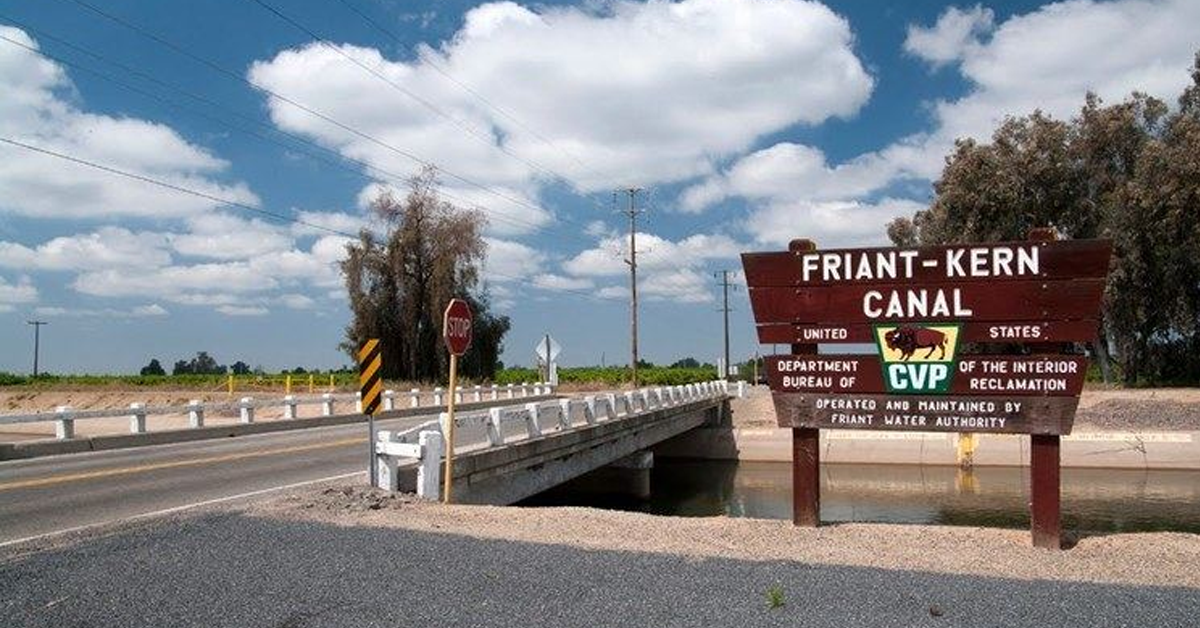Two weeks after the State of California rolled out its plan that spells the end of coordinated distribution of the state’s water resources from the Sacramento-San Joaquin Delta, California Democrats in Congress have finally spoken out, sort of.
Two letters – issued by U.S. Senator Dianne Feinstein and Reps. Jim Costa (D–Fresno), John Garamendi (D–Walnut Grove), Josh Harder (D–Turlock), and TJ Cox (D–Fresno) – were dispatched on Wednesday.
One was sent to U.S. Interior Secretary David Bernhardt. The other? Sent to California Gov. Gavin Newsom.
Both letters urged cooperation between the Feds and State of California, and stated that the authors were aware that both the Feds and the State agreed that coordinated operation of the state and federal water projects were necessary to ensure a reliable water supply for people and the environment.
Beyond that, the contents of the two letters couldn’t be more different.
The letter to Bernhardt, drafted in 14-point font in a collegiate attempt to span longer than a single page, requested he cooperate with the State of California given “the conflict between the federal biological opinions and the State’s recently issued incidental take permit (ITP) for the long-term operation of the State Water Project.”
Other than an entire paragraph of filler, the only other significant part of the letter was the second to last paragraph: “Numerous water users, both urban and rural, have made clear to us that all Californians stand to lose if the state and federal water projects are no longer operated in coordination. This will reduce water supply certainty and deliveries just as drought may be returning to California.”
This paragraph is significant for a few reasons – primarily that it was sent to the wrong recipient.
Bernhardt has repeatedly reiterated that coordinated was key to ensuring water peace in the Golden State. Gov. Gavin Newsom, on the other hand, hasn’t uttered one word about it.
Second, if the two water projects are not operated in coordination – a feat that has never occurred during the 60 years the two projects have simultaneously existed – it would occur because the State of California decided to operate the State Water Project independently from the Central Valley Project, not the other way around.
Further, managing water under their state-issued incidental take permit would wreak havoc on local economies, be at odds with not only state water users but all water users in California, and would see water managed in the same manner that has resulted in millions of acre-feet needlessly sent to the ocean.
This is the same manner of water management that has caused degradation of water quality, continued decreasing of fish populations, and higher water costs for Californian’s who increasingly receive less water.
After years of cooperation, discussion, and multiple reviews, it was the State of California who decided to go rogue, not the Feds.
The letter seemed to be a pre-emptive strike of who they will blame if Newsom’s administration decides to continue their failed policy. We can safely assume the authors of these letters would not blame the state.
The letter to Bernhardt should have explained the authors realize that actions taken by the State of California – such as a lawsuit by Governor Newsom and Attorney General Xavier Becerra against biological opinions – hurt Californians, not the Federal government.
It also should have expressed sufficient apologetic regret that Newsom and Becerra’s lawsuit halted progress on raising of Shasta Dam, a project that would deliver an additional 630,000 acre-feet of water to Californian’s and their environment.
Heck, it should have admitted that blind vote of the House Natural Resources Committee – such as Cox – to authorize vast investigatory powers over false claims by the Committee’s Chairman that he received no cooperation from the Interior Department, only to have 43,000 documents in his possession.
Perhaps, given their brevity, these authors understand how any ask of Bernhardt arrives in vein after voting to impeach his boss a few months ago.
Meanwhile, the letter to Newsom gives readers more of what they really need to know.
They similarly touched on the need for cooperation and coordination of the two water projects and resolving the differences between the biological opinions and the incidental take permit.
But the letter to Newsom was really about one thing: early implementation of voluntary agreements.
There’s an underlying message for those of us in the cheap seats, it’s that these legislators are putting the cart far before the horse.
According to the authors, all that ails California’s new water war can be solved by the implementation of these voluntary agreements, yet completely ignoring the fact that not only are Central Valley Project water users in disagreement with the State, but so are State Water Project users.
The message to Newsom seems to remove voluntary agreements as a negotiating tool for some, while simultaneously propping up the agreements as a solution that would allow all of us to ignore an attack on Californians’ water by their own state.
It reads, “Fortunately, we believe early implementation of voluntary agreements would provide an important foundation to avoid further conflict.”
It might be news to the Senator and her friends, but voluntary agreements are not a foundation.
They are a draconian last ditch effort by water users and taxpayers to stop their own state from completely obliterating their livelihoods through confiscation of water.
Beyond these letters lies an uncomfortable truth: California’s bureaucracy has become not only the strong-arm of our state legislature but is also a place, a place where blatant and harmful decisions by elected leaders can be parked and covered by unelected officials.
One is accountable, one is not.
While Newsom gambles our future in a courtroom and California’s political majority pursue perpetual decline in living conditions statewide, a place to park and cover his decisions will be needed.
Turn left ahead and you will arrive at your destination: the California State Water Resources Control Board and the Department of Fish and Wildlife.










